Tiny Epic Kingdoms was a runaway success on Kickstarter back in January, hitting over $285k by the end, with tons of backer-suggested upgrades, lots of stretch goals achieved, all while keeping it a small box game. Scott Almes (the designer) and Gamelyn Games (the publisher) are back with Tiny Epic Defenders—it’s thematically a sequel, but is really a brand-new game.
At a glance: Tiny Epic Defenders is a cooperative for 1 to 4 players, ages 13 and up, and takes about half an hour to play. I’ve played it with my kids (ages 7 and 10) and they grasped the rules just fine, but it’s a pretty brutal game and we lost even after adjusting the difficulty down, so I’d recommend it for kids who are mature enough to accept losing. The project is now on Kickstarter, and the pledge level for a copy of the game is $8 for the full-art Print and Play, $16 for the printed version of the game, and $24 for the deluxe version (which includes a few extras).
Components:
- 37 cards:
- 1 Capital City
- 6 Outer Regions
- 4 Heroes
- 3 Epic Foes
- 7 Player Turn Cards
- 6 Horde Cards
- 4 Dire Enemy Cards
- 8 Artifact Cards
- 7 Threat cubes
- 4 Player Pawns
- 4 Player Health cubes
- 1 Epic Foe Health cube
The copy I played was a demo prototype, so final components may change significantly, particularly if Tiny Epic Defenders hits as many stretch goals as Tiny Epic Kingdoms. I know Almes and Gamelyn Games already have a lot of other Heroes and Epic Foes in the works, ready to be unlocked as stretch goals, so the final card count may well be higher than this.
The cards for the prototype are all mini-sized, but it looks like the final size will be closer to a regular card size, with a stretch goal to upgrade them to tarot-sized cards. Still, since there are only a few cards on the table at a time, it should still be a pretty compact game.

The version I played used very simple iconography since the artwork had not been completed yet, but as you can see from the images above and on the Kickstarter page, the finished game will feature fantasy-style artwork on all the cards.
How to Play
The rules of the game are available here, as well as a free Print and Play file if you want to try the game out for yourself. (You’ll need to provide a few meeples and wooden cubes to track health.)
The goal of the game is to defeat the Epic Foe before the Capital City is destroyed.
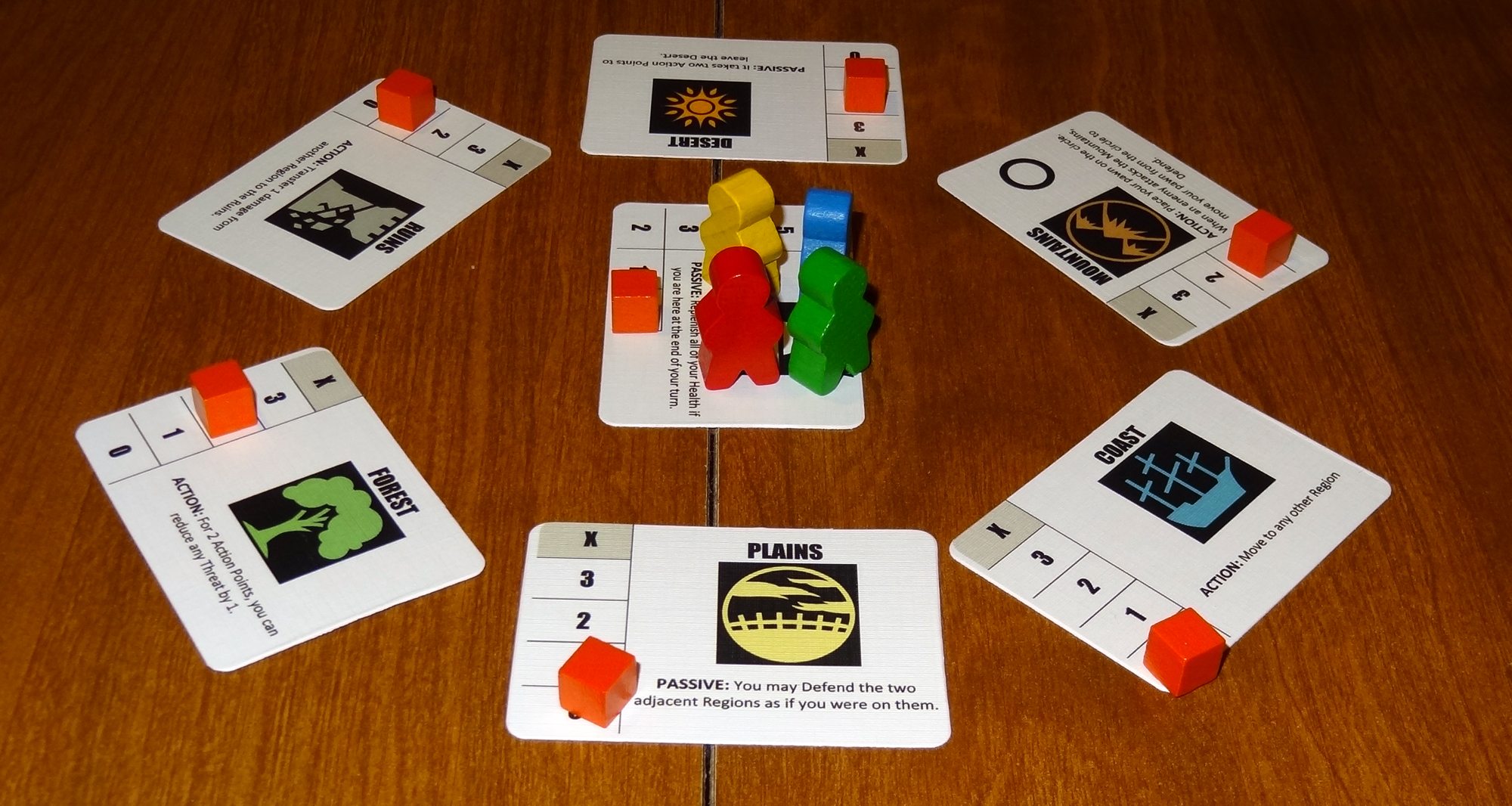
To set up, you put the Capital City in the center, with the 6 Outer Regions surrounding it. The regions are adjacent to each other in a ring, and the two on either end of the Capital City are also adjacent to the Capital City. Each player gets a hero card, which tracks their health and shows their special ability, and their player pawn starts in the city. Everyone starts with full health; the threat level on the Capital City starts at 0, and the threat level on all the regions starts at 1.
You pick one Epic Foe at random and place it face-down. Then you build the Turn deck, which will include a number of Enemy cards and Player Turn cards, based on the number of players. Then you’ll build the Horde deck, which consists of a number of Enemy and Dire Enemy cards that will get added to the Turn deck—the number is based on the difficulty level of the game.
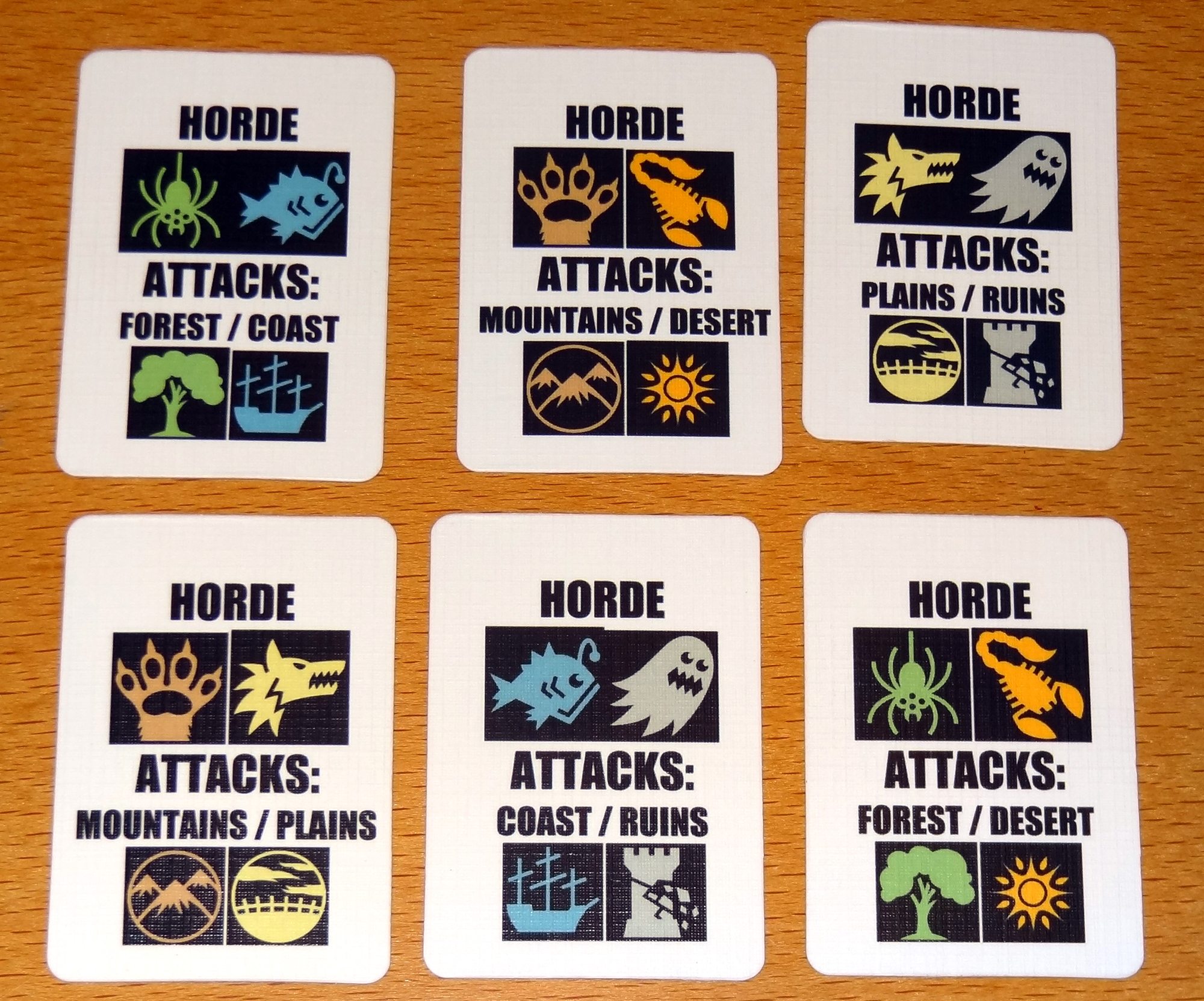
To play, you flip over the top card of the Turn deck—either it’s an Enemy or a Player Turn card. If it’s an Enemy, it will show regions on the bottom that are under attack. Raise the threat level on each of those regions by 1. If the threat level reaches the X, the region is destroyed and the card is flipped over. If a destroyed region is attacked, the Capital City’s threat level goes up. And, of course, if the Capital City is destroyed, the game is over and the tiny epic heroes have lost.
If a player is in a region that is under attack, they may defend it by spending one health point, which prevents the threat level from rising. To defend the Capital City, you must be in the region being attacked, not the Capital City.
Dire Enemies have other nasty effects that happen that cannot be defended against before their regular attack. But if you defend against a Dire Enemy, then you get an Artifact—the Artifacts are very powerful single-use items.
When a Player Turn card is drawn (they show the player color), then that player gets 3 action points (AP). You may spend AP to move to an adjacent region, fight (which decreases the threat level by 1), or use the region’s special ability, if any. For instance, the Coast lets you move to any other region, not just those adjacent to you, and the Forest lets you reduce the threat in other regions for 2 AP. You may also spend one health point to gain an extra AP, but only once per turn. Finally, each hero has its own special abilities.

When heroes run out of health, they aren’t dead—they just can no longer defend or get extra actions. If you start your turn in the Capital City, however, you get all of your health points back (but cannot defend).
When the Turn deck runs out, you’ve survived the round. Congratulations! The game isn’t over yet. Now you shuffle one card from the Horde deck into the Turn deck, and start again. When there are no more cards in the Horde deck, then the Epic Foe arrives. You flip over the Epic Foe, which will say which region it goes to. The Epic Foe sits there, and you may spend actions while in that region to attack the foe. Once the Epic Foe has arrived, you’ll just continue reshuffling the Turn deck every time it runs out until either the Epic Foe is defeated or the Capital City falls.
Note: If you defeat the Epic Foe, you still have to survive the round—and then you win.
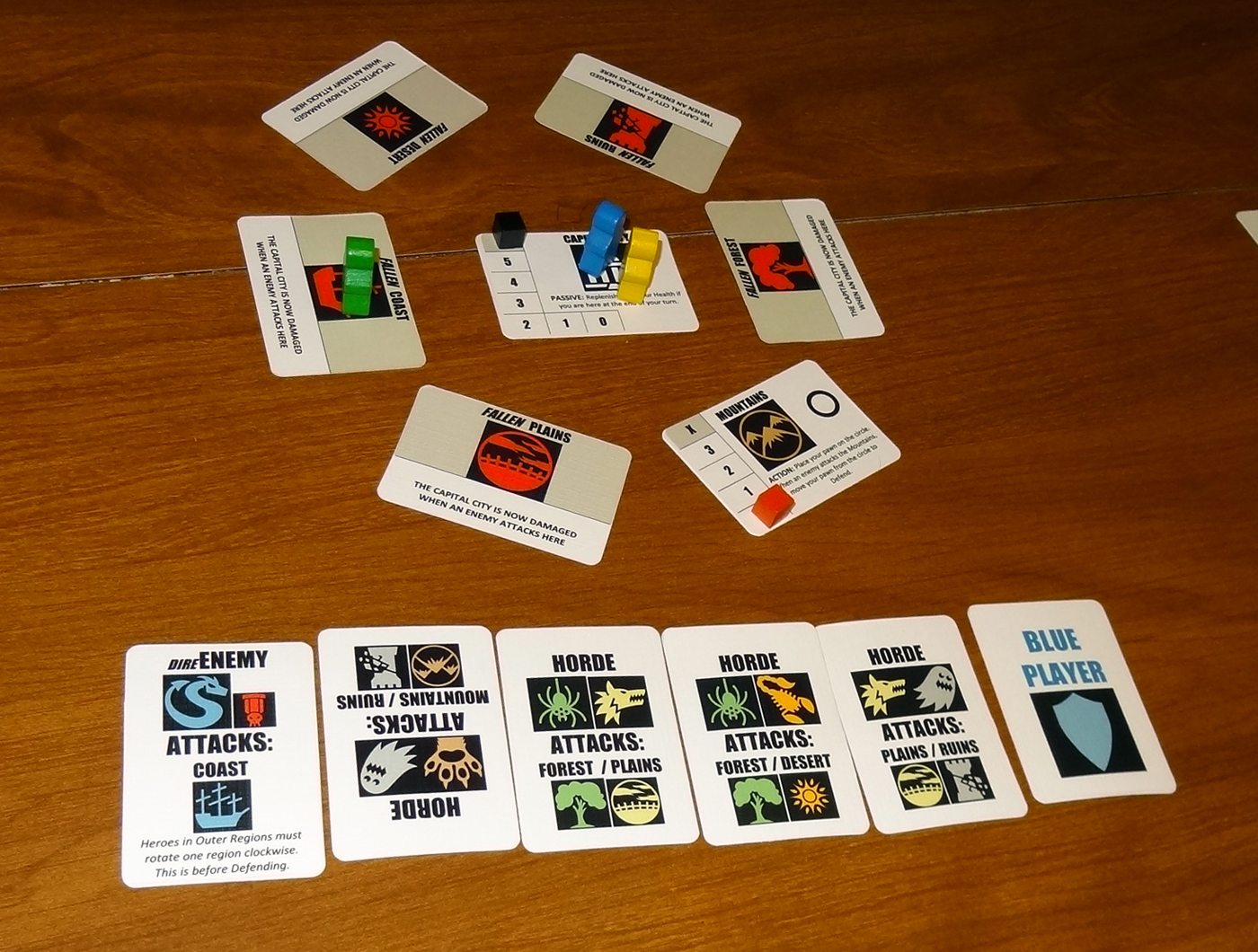
The Verdict
As I’ve mentioned before, I’m a fan of portable games, particularly when they still have meaty gameplay. I love the idea of a small-box game that allows for a lot of replay value, and if Tiny Epic Defenders makes even half of what Tiny Epic Kingdoms did, I’m sure we’ll get to see a bunch of new Heroes, Epic Foes. (Or maybe even Enemies and Locations—though I haven’t seen any of those in prototype form yet). However, despite the similar title, Tiny Epic Defenders is a completely different game from Tiny Epic Kingdoms, with barely any game mechanic overlaps, so whether you liked the first one or not, you should evaluate this on its own merits.
As in other cooperative games, you can still run into the alpha player problem—that is, when one player starts directing everyone and basically playing solitaire with everyone else as puppets. The only way I’ve discovered to correct this is for experienced players to just talk a little less when it’s not their turn—or else having everyone be able to make a lot of suggestions and voting on a course of action. One of the great things about cooperative games for parents, though, is that you can help direct your kids and give them suggestions, so that they start learning different strategies while still getting to play a game with mom or dad. And you can also let them make their own decisions—I’m a firm believer that kids should learn that actions have consequences, and in a cooperative game your actions influence everyone.

I liked the varying location and hero abilities; it’s fun to figure out the best way to split up and defend areas, but there’s always an element of luck based on how the Turn deck is ordered. You don’t know if you’ll get your turn early in the round or late, and whether you should go back to the Capital City to charge up your health points or try to stay and defend with only a single health point left.
The mechanic of shuffling enemies and player turns into the same deck is an interesting one, because it means that in each successive round, there are more enemies but the heroes get the same number of turns, so it gets harder and harder. However, each round you’re just adding one enemy, so you can start to figure out which regions are going to be attacked the most, and that can help you plan out where to defend. This mix of luck and strategy isn’t for everyone, but I liked it.
I will say that the game, at least in the prototype form and early ruleset that I tried, is really brutal. I played several times before winning once, and that’s including playing a game with my kids where we set the difficulty level one notch below beginner. In some cases, we didn’t even last long enough to see the Epic Foe arrive, let alone defeat it. We also noticed, after several plays, that a 3-player game (which is what I was doing most of the time) is actually the hardest, because there are only three player turns per round. For a 2-player game, each player gets two turns per round, and in a 4-player game, each player gets 1, so the heroes-to-enemies-ratio is worst in a 3-player game. This has been addressed in the latest version: there’s a special Player Turn card, used only in the 3-player game, that lets the players take 3 Hero actions.
I know that some of the other rules and powers have been tweaked somewhat since the version I played. For one, the heroes all have a little more health. The Dire Enemies paired with Artifacts are also a newer feature, and the Artifacts can be really powerful if played at the right time. So I think the game may be a little more manageable at the easier levels—it’s kind of demoralizing when you keep losing on “Beginner” mode. But I also understand why cooperative games are often so difficult—because eventually somebody figures out a good strategy, and then they start complaining that the game’s too easy. Fortunately, it’s very easy to adjust the difficulty level here by increasing the size of the Horde deck.
Overall, I really enjoyed Tiny Epic Defenders even when I was losing, and I’m excited to see what the final product will be like.
For more information or to pledge for a copy, visit the Tiny Epic Defenders Kickstarter page.
Disclosure: GeekDad received a demo prototype of this game for review.
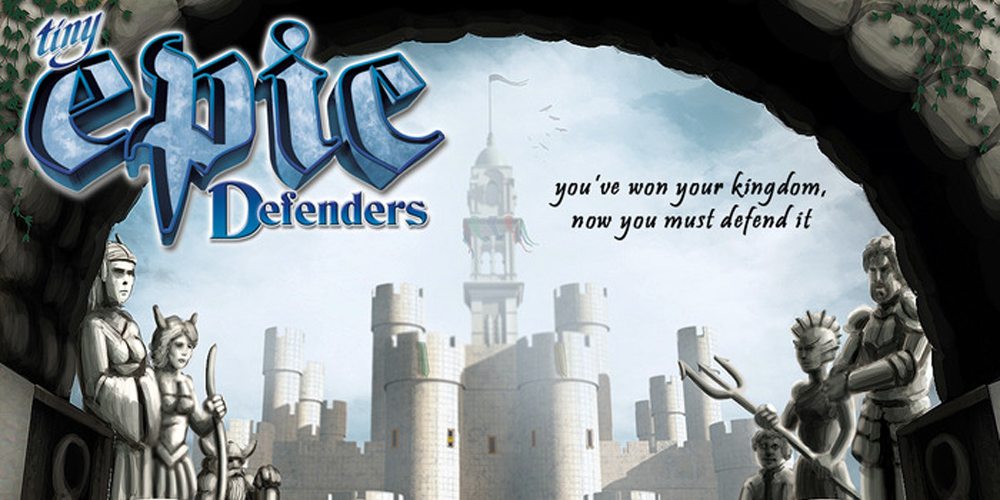

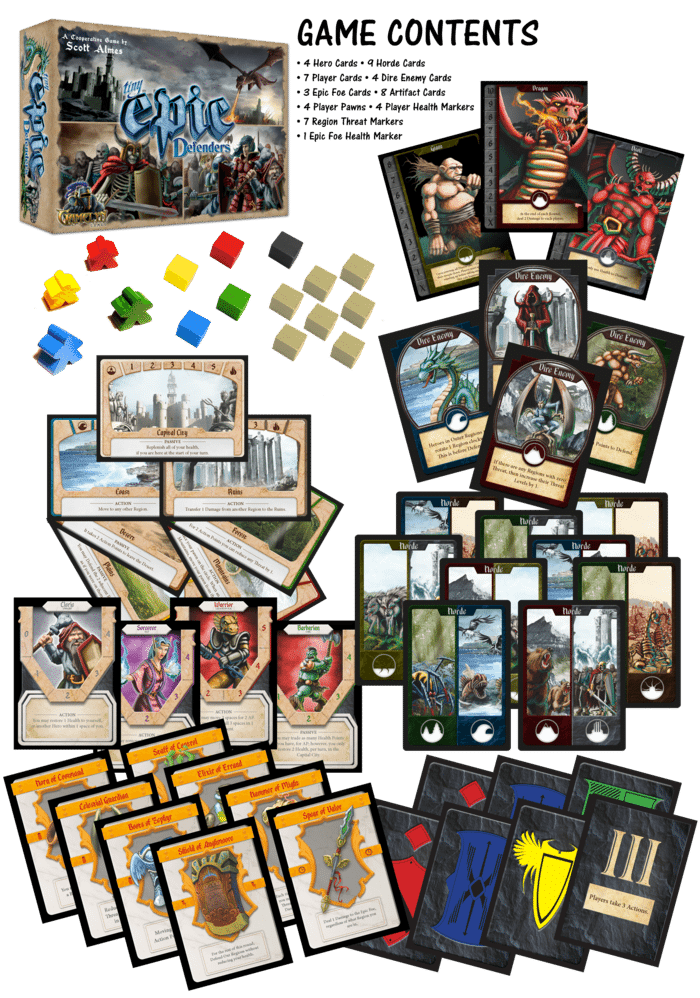





the link you gave is for Epic KINGDOM… not epic defenders… I’m looking for the cards to give this a try